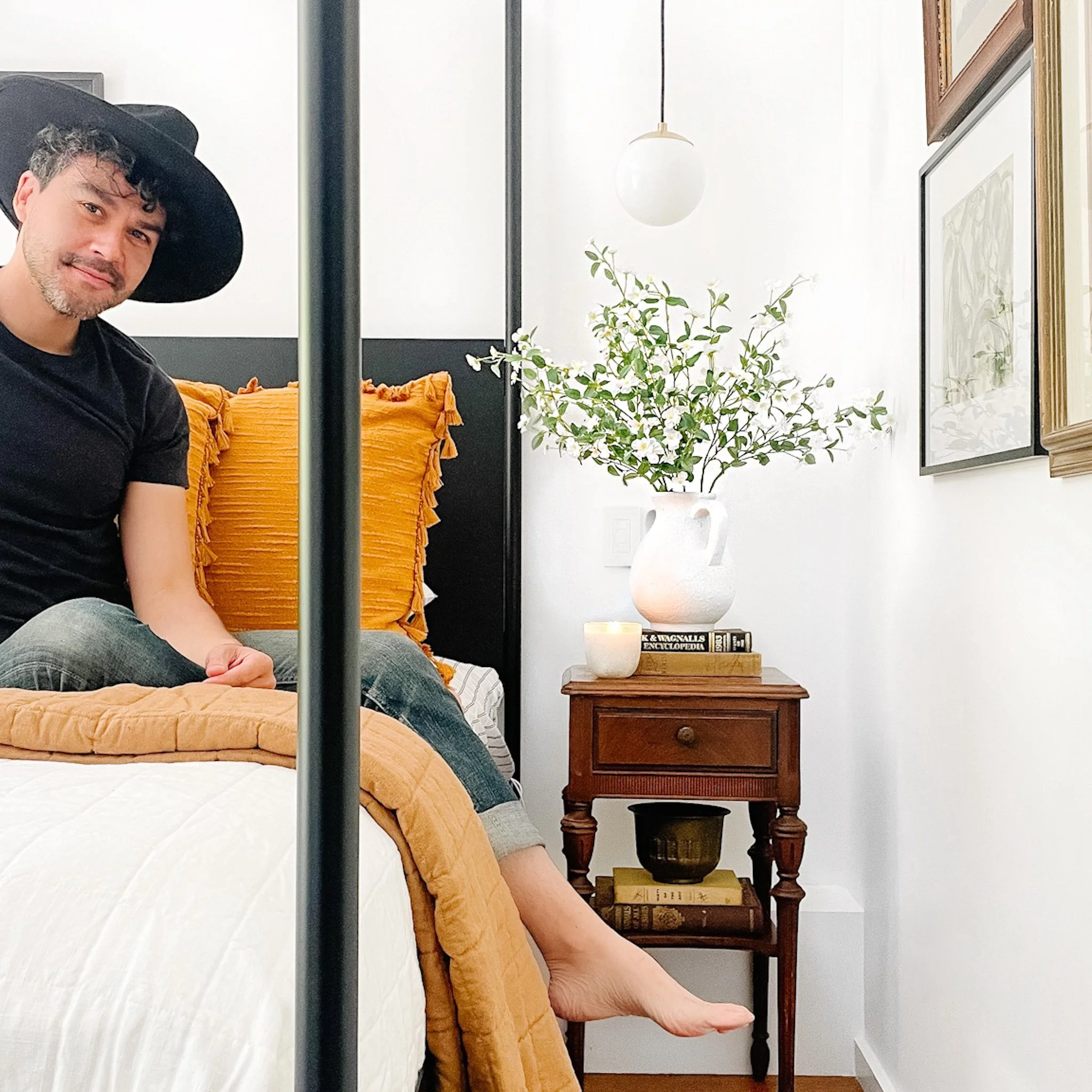How to Play the Fiddle Leaf
One of my favorite ways to decorate my home is to incorporate plats + greenery into a space by adding a plant or two, bringing the room to life with lush colors courtesy of Mother Nature. My favorite plant + garden supplies in my home here. Having a variety of plants around me just makes me feel so serene and cozy, in addition to the obvious fact that they’re very aesthetically pleasing to the eyes.
I love the Ficus Audrey (here’s why.) But today I’m sharing a few thoughts about a tree that is so popular even your dad knows her. The Fiddle Leaf Fig is super popular and has been for a while now. I just love their large dramatic leaves and the way they add so much depth and dimension to any corner of a room. They also get super tall. The best part? They’re not too hard to take care of if ya just keep a few things in mind. I know some of ya have trouble with them. So here’s a quick rundown on how to take care of a fiddle leaf fig with ease:
Repot your plant with drainage
As soon as you bring your precious fiddle home, it’s important that you report them immediately. Although the plastic growing pot that the fiddle leaf fig comes in when you purchase it is designed to reduce the plant’s risk of getting root rot, it increases the plant’s risk of drying out and suffering enormously. These roots grow fast. Just be sure to provide drainage in the pot either by ensuring your pot has holes in the bottom, or by placing big stones or debris at the bottom so the roots don’t sit in water at the bottom. This is really important - make sure you transplant into a large enough pit with drainage.
Opt for a pot that is wider by 2 inches and add stones (around 3 inches) to the bottom, thus preventing rot by allowing drainage. Then you can start adding potting soil, pushing it to the edges but making sure to leave a hole in the middle where you’ll place the root ball.
Once you remove the plant from its original pot, be sure to check for any rotten roots so you can cut them off swiftly. Then, place the root ball in the center of the new pot where you left the empty crater, and proceed to add more soil until the pot is filled.
For the last step, add water as you would to any other houseplant.
Choose the right container
This is a very important if you want to take care of a fiddle leaf fig long-term. To ensure that your plant never sits in water for too long, and has plenty of opportunity to root out choose a container that provides lots of opportunity for growth like this Mayon Planter. I love it so, because its got a lovely refined cement silhouette but with a wonderful texture that adds a ton of visual interest. Something about the verticality of this planter makes my heart sing. I love her and so does my fiddle.
Water your plant properly
The fastest way to RIP your beloved fiddle (or any other plant really) is to overwater it. Try not to. This is why allowing proper drainage is one hundred perfect necessary to keep your fiddle leaf fig healthy and flourishing. If you overwater it will drain out. Watering once a week will do, and it’s best if you do it slowly and wait until you see water coming out of the drainage holes. Don’t dump it all at once - take your time with it.
Mist + Wipe Leaves
Fiddles love a good spray bottle mist once a week. Do it. Especially where the leaves are budding. This will help them grow and prevent leaves with holes. I love misting with room temperature water. Then later in the day, I will wipe each leaf with a damp cloth to remove any dust so each leaf can breathe. They will love you for this. I promise.
Fertilize after one month
Wait for about a month to give your fiddle leaf fig ample time to recover, and then you can start fertilizing! Feed your plant with Fiddle Leaf Fig Plant Food every time you water it and I promise you, new leaves will start growing in no time!
Light is necessary, but not too much
Place your plant in a location where it gets plenty of indirect light. Fiddle leaf figs need light, but harsh direct sunlight can prove to be too harsh and could even burn the plant’s leaves. Consider a corner where the light is strong in the morning but wains in the afternoon. My Fiddle loves being near the living room window but with a bit of shielding from the TV console.
Patience in pruning
It’s best to wait until springtime before getting rid of dead leaves and pruning, as this will give the plant enough time to regrow. The most important thing here is patience. It takes some time for a fiddle leaf fig to regrow to an ideal state.
When pruning, be sure to cut at an angle using pruning shears where leaves are dead, and remember not to cut off too many leaves at once to prevent causing trauma and shock to the plant.
Avoid Drafts
Also, Pro Tip: Do NOT place your fiddle lead directly in front of a cold drafty window. They hate it. They prefer to be in the light, but not in a drafty location. Lots of people place it in front of a window and then open it. You will see leaves drop quickly if you do that. Finally.
That’s basically it! Easy, right? Also, be patient if you notice your fiddle isn’t loving the light move it up. Just give a good two weeks to see how things are going. Of course, since it’s a live plant, a fiddle leaf fig requires some form of care and maintenance. However, compared to other indoor house plants, it’s pretty straight-forward and hassle-free. Just be sure to give it a light cleaning ever so often with a clean cloth to remove any excess dust and dirt.
Believe me, it’s so nice to have a fiddle leaf fig inside your home! It’s a known fact that having plants in your vicinity can do wonders in improving indoor air quality as well as uplifting one’s mood. You see, they’re not only pretty to look at, they’re also very beneficial to one’s health and overall well-being.
If you don’t consider yourself as a plant person, I suggest you at least give it a try! Taking care of plants is a huge responsibility but it also be quite satisfying and productive. Xoxo


































